Bath: A Classical Architect’s Dream
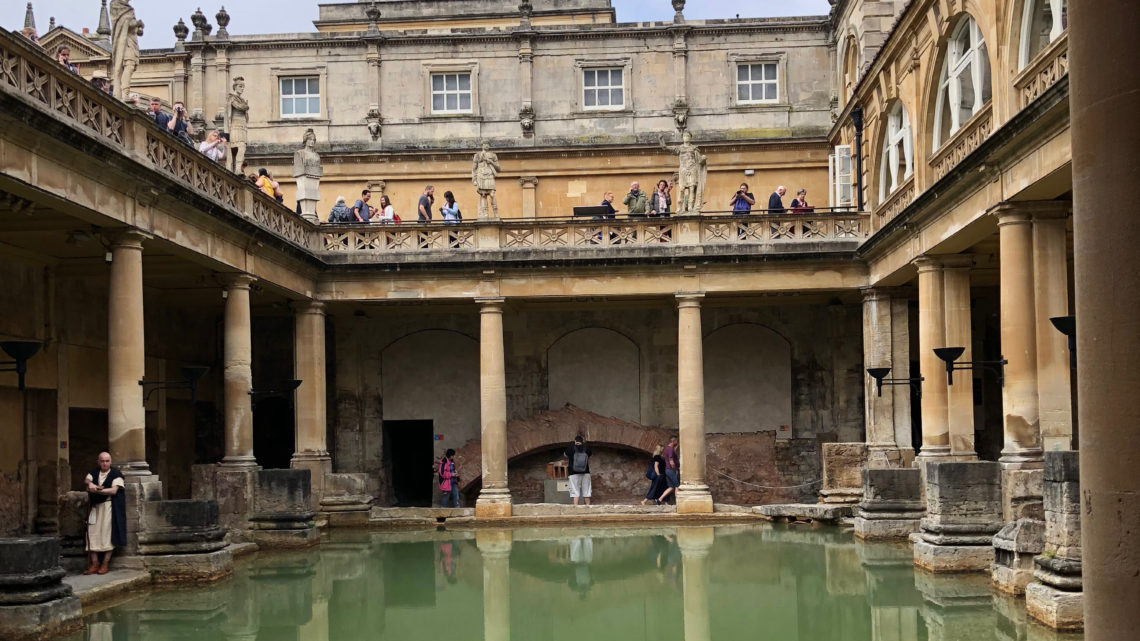
The United Kingdom is a beautiful place! Although London normally takes the spotlight, the island of Great Britain has many other lovely cities that are worth a stop for anyone visiting. I had time for one side adventure before heading to the next country on my trip.
I had my eye set on Bath: one of England’s smaller cities! This gorgeous place is located in South West England, close to the Welsh border. The city was built in the ancient Roman times as a spa town due to its location near a natural hot spring. After being largely forgotten, Bath was put back on the map after attracting the attention of an English monarch during the 17th century. Most of the architecture seen today is 18th-century Georgian: an English form of the Neoclassical style.
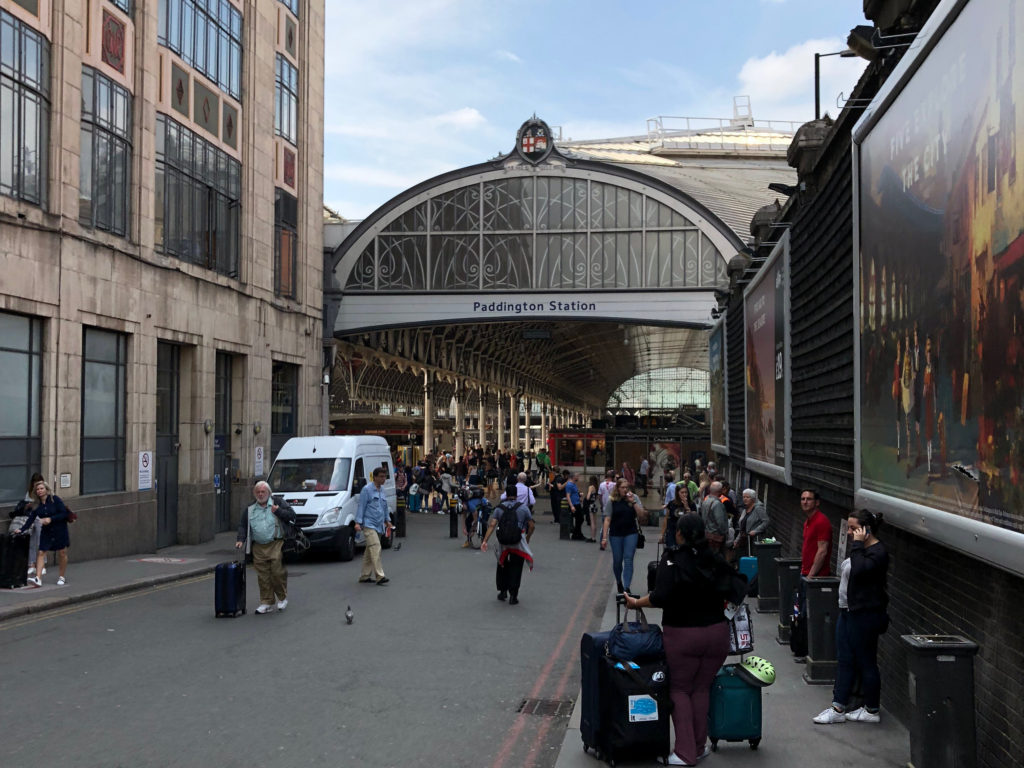
I checked out of my hostel in Kensington and set off for Paddington Station to catch my train to Bath! At the station, I grabbed my morning coffee at a small café.
“It is on the house!” the barista said. “Happy bank holiday!”
After this friendly encounter with the barista, I headed over to the platforms to catch my train. On the ride over to Bath, my train passed through the mystical English countryside, which was foggy on this Monday morning. An hour and a half later, the train pulled into Bath Spa Station!
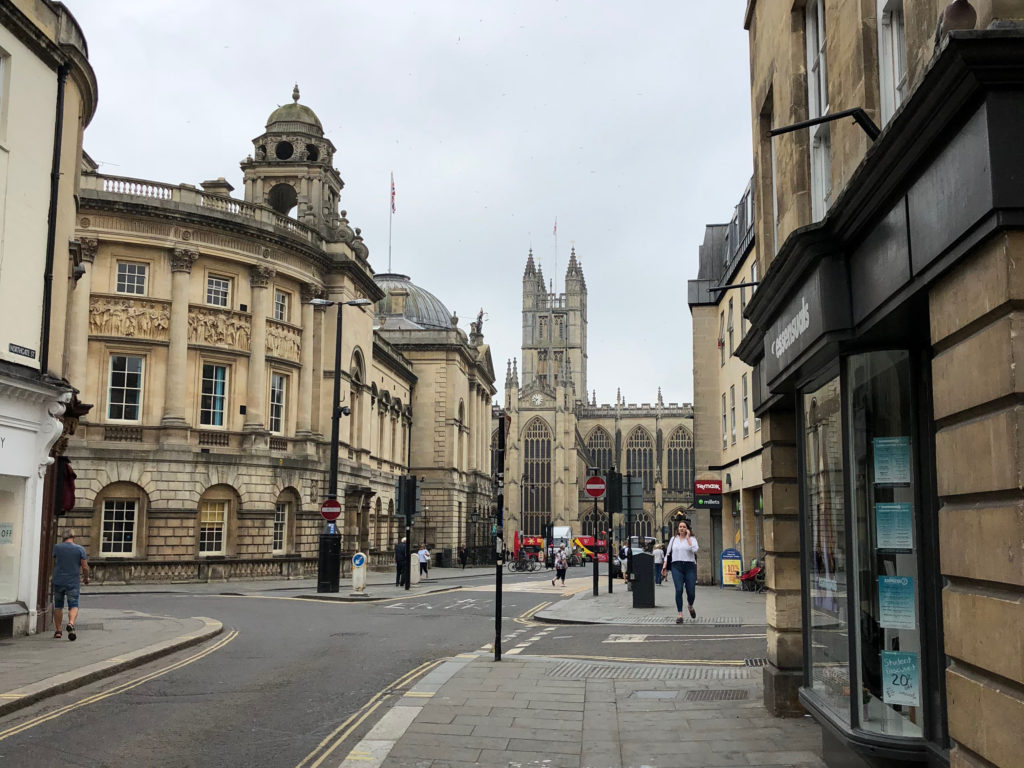
I walked towards a popular pub near the Pulteney Bridge, where my hostel for the night was located. I had only just arrived in Bath and was already amazed by its Georgian architecture! The entire city is built in a tan-colored stone called “Bath stone.” It truly felt like a taste of Rome in the middle of England!
The Roman Baths
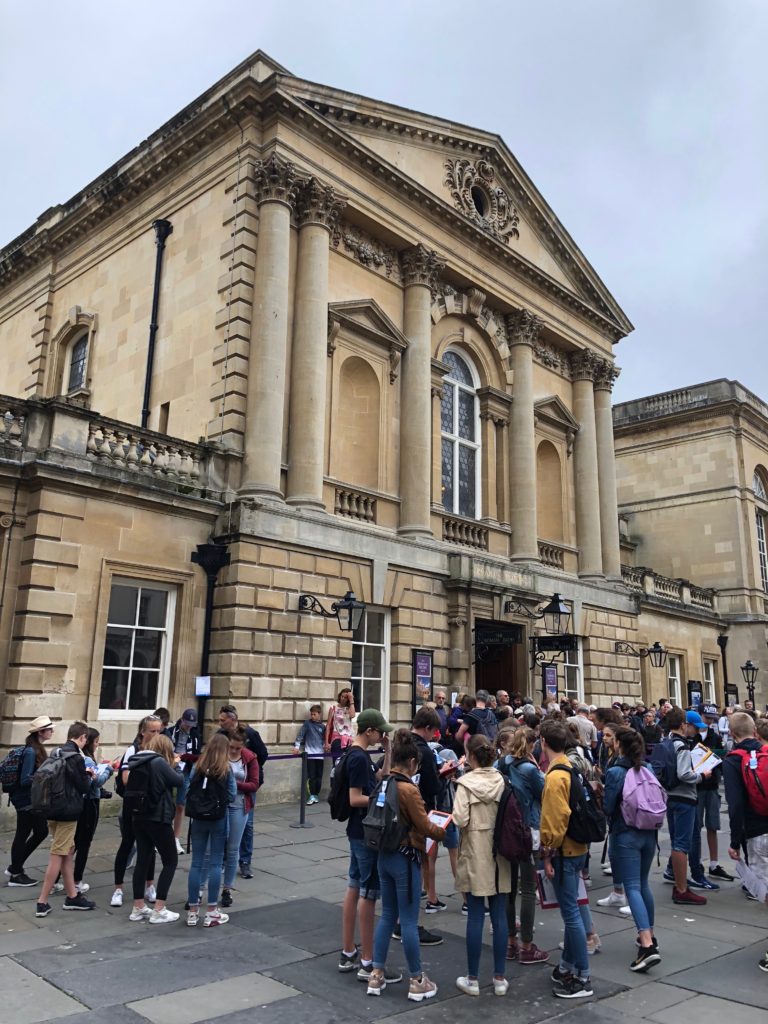
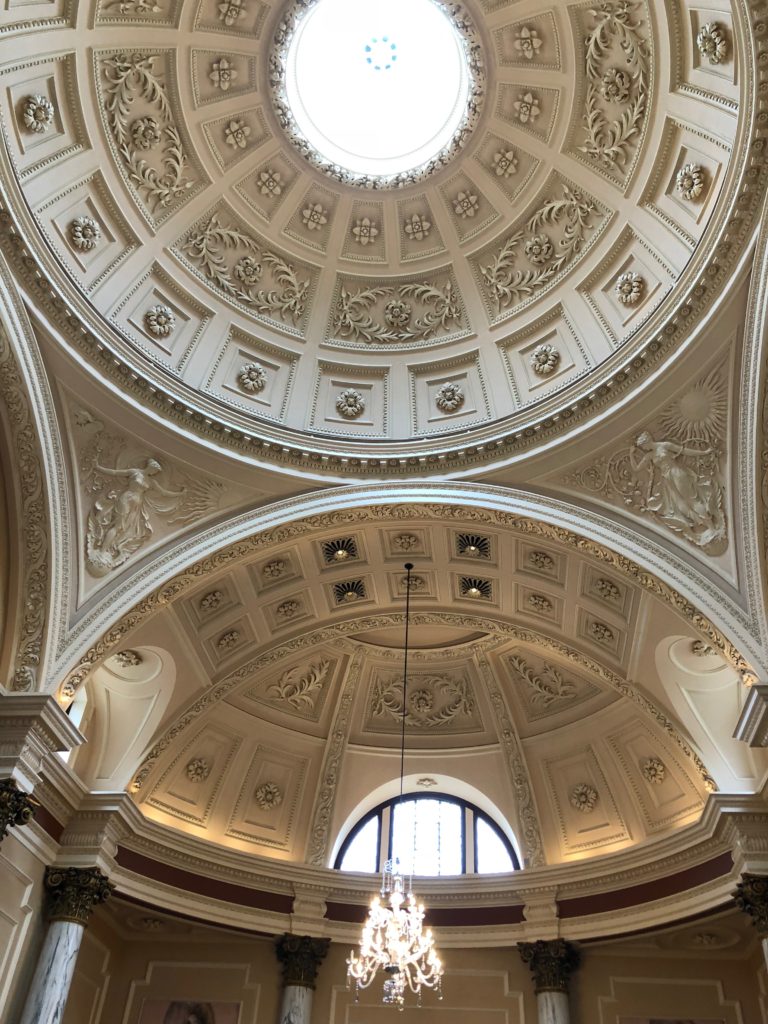
The star attraction of the city is the Roman Baths! I arrived here shortly after 9:30 a.m. before the rest of the crowds. After a short wait, I went inside the main entrance, bought my ticket, and headed into the ancient site that gave the city its name.
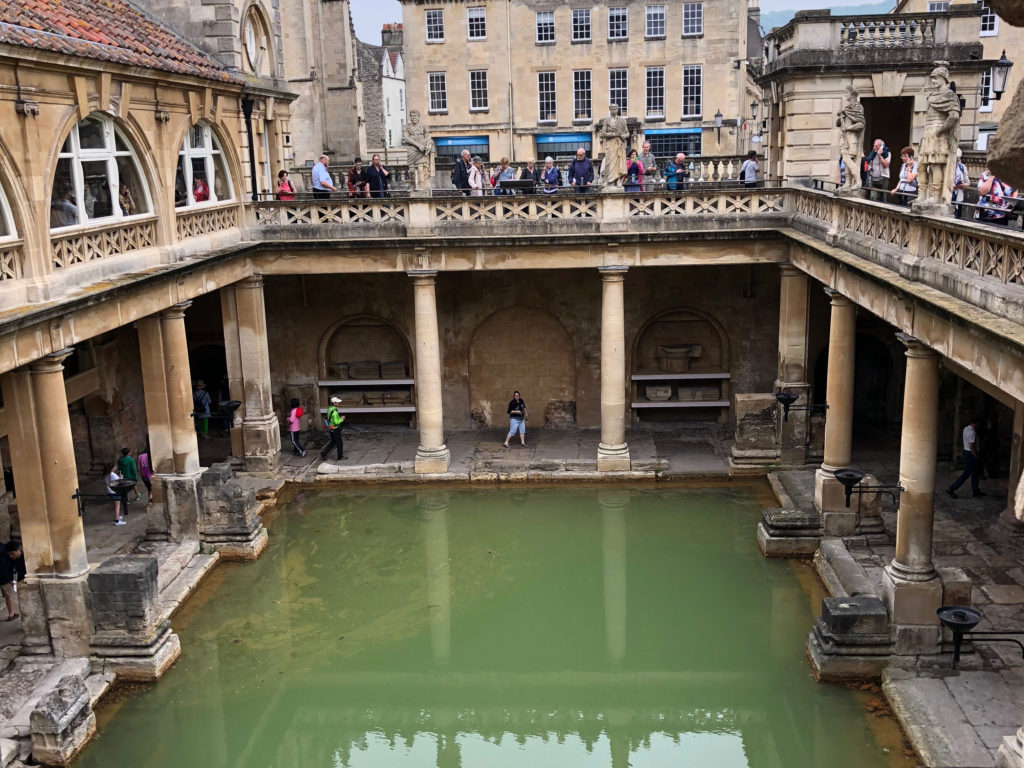
Just past the entrance hall, I stepped outside onto the museum’s terrace. From here, I got a view of the Great Bath, as well as the surrounding architecture of the city. The terrace contains statues depicting Roman emperors and British governors, all facing inward. The bath itself dates back to the 1st century A.D., whereas the museum was not built until later in the 19th century.
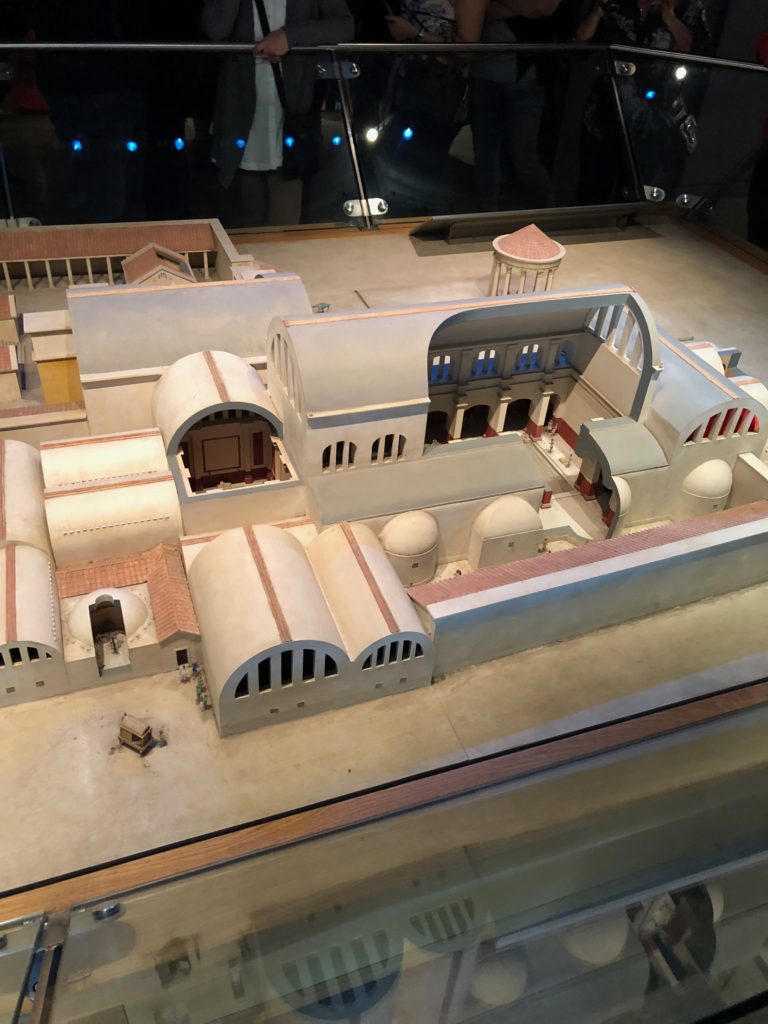
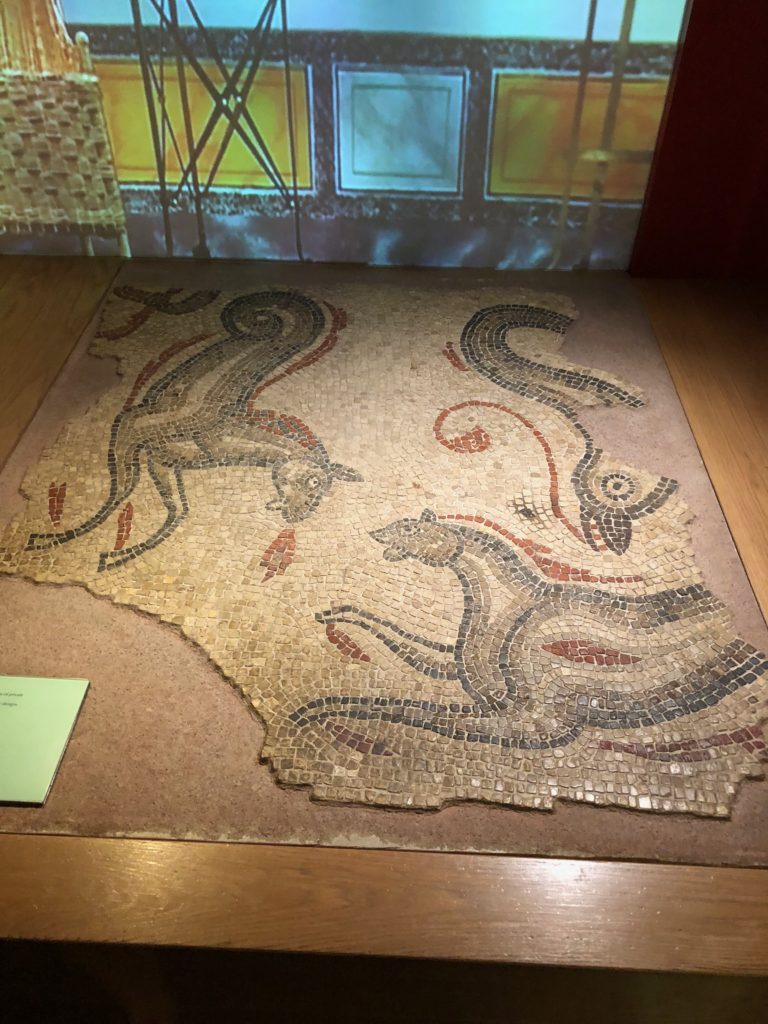
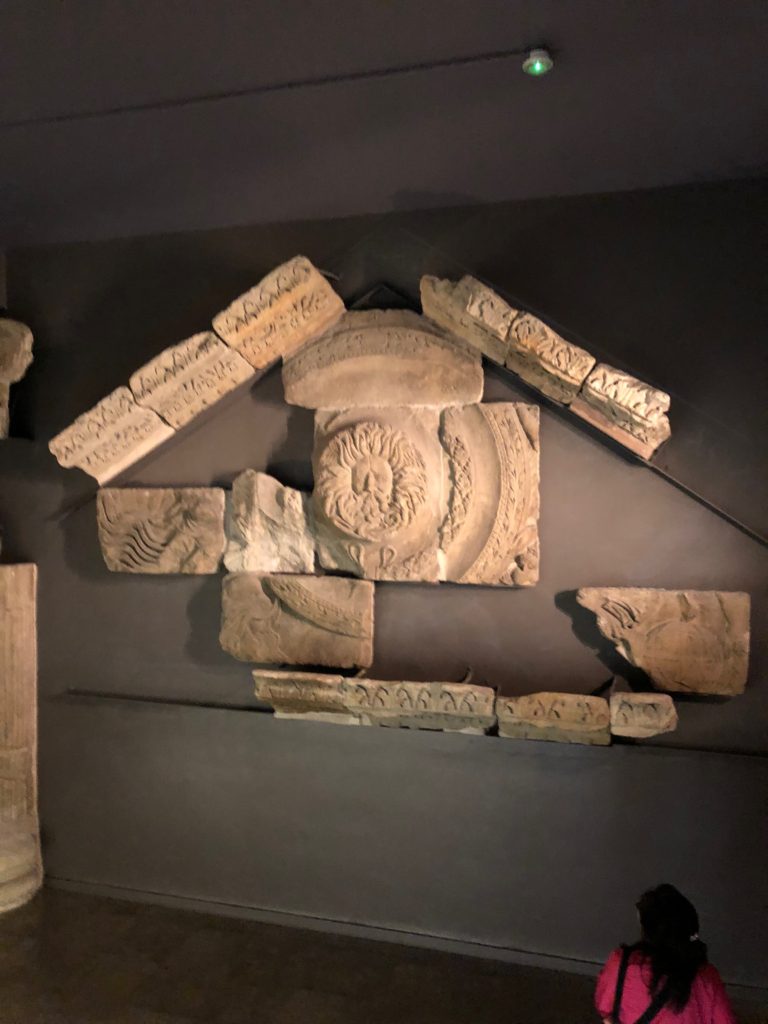
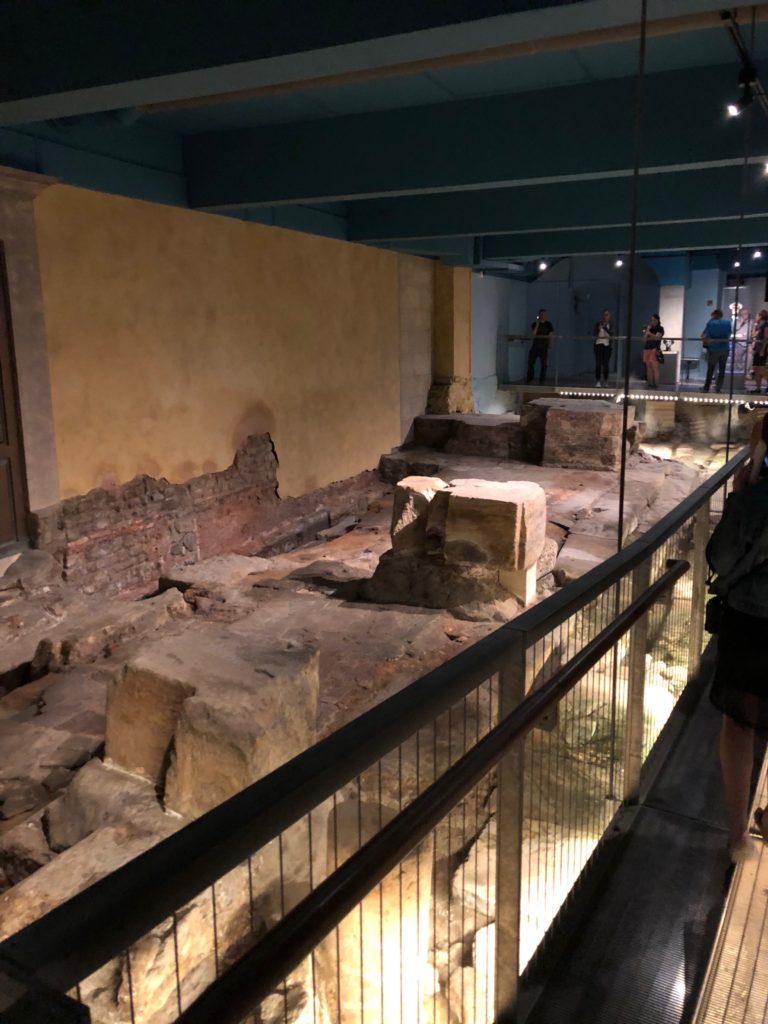
From here, I descended into a wing dedicated to artifacts from the original bath complex. I learned more about the bath’s history and its use during the ancient Roman times. In this area, I also saw a scale model of the site, along with ruins of the temple’s pediment and the delicate mosaic floor: a typical feature of many Roman baths. I even got to walk through the remains of the temple itself, which was buried beneath the city streets until being re-discovered by the British.
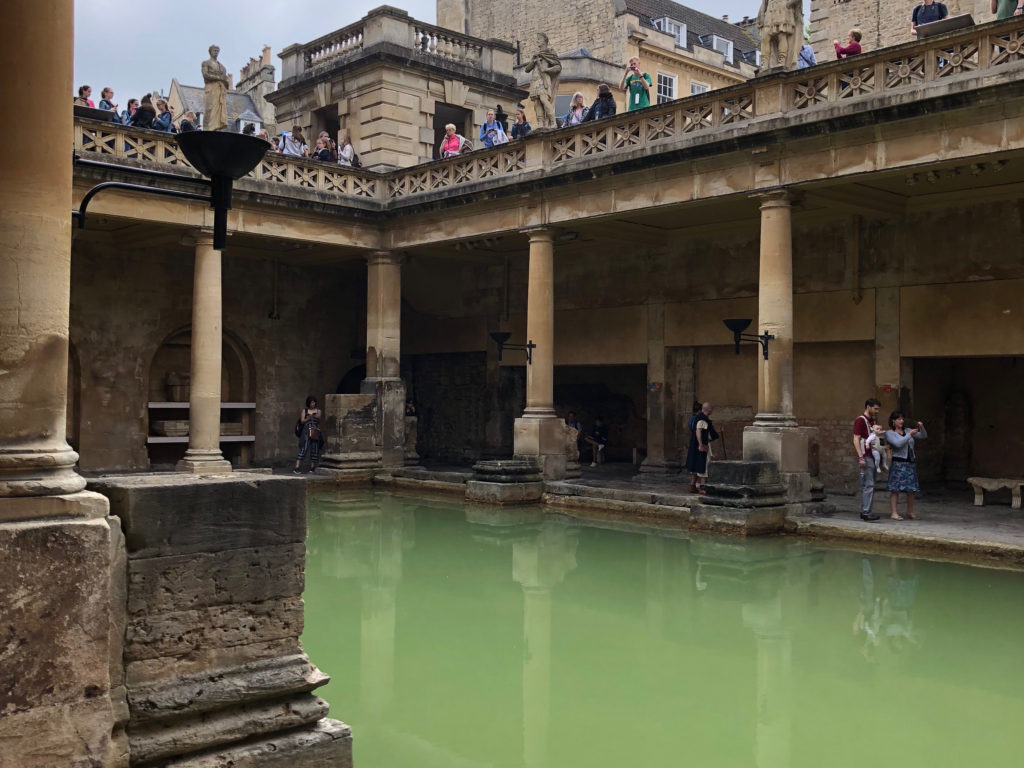
Back in the Roman days, a 40-meter vaulted ceiling enclosed the Great Bath, making it one of the largest buildings in the ancient city. Today, it is located in an open-air courtyard lined with Doric columns: a tribute to its ancient Roman past! I was struck by the murkiness of the water, as if it had not been cleaned since the fall of the Roman Empire. Because of this, absolutely NO bathing is allowed today! There is a nearby spa called the “Thermae Bath Spa,” where swimming is allowed.
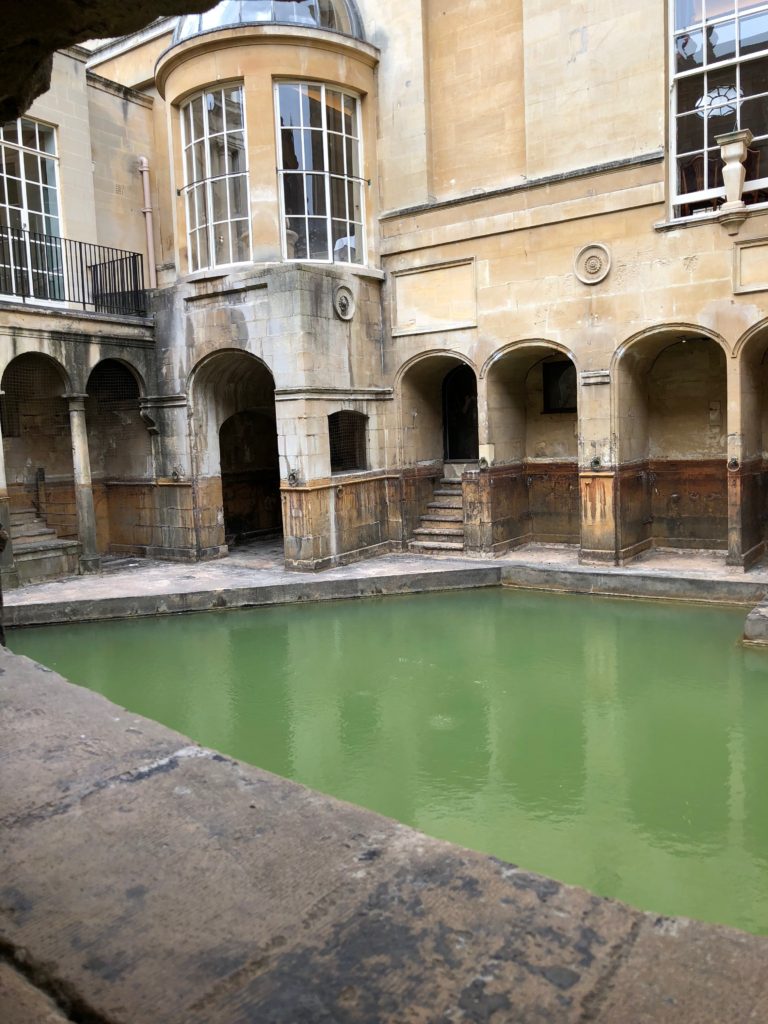
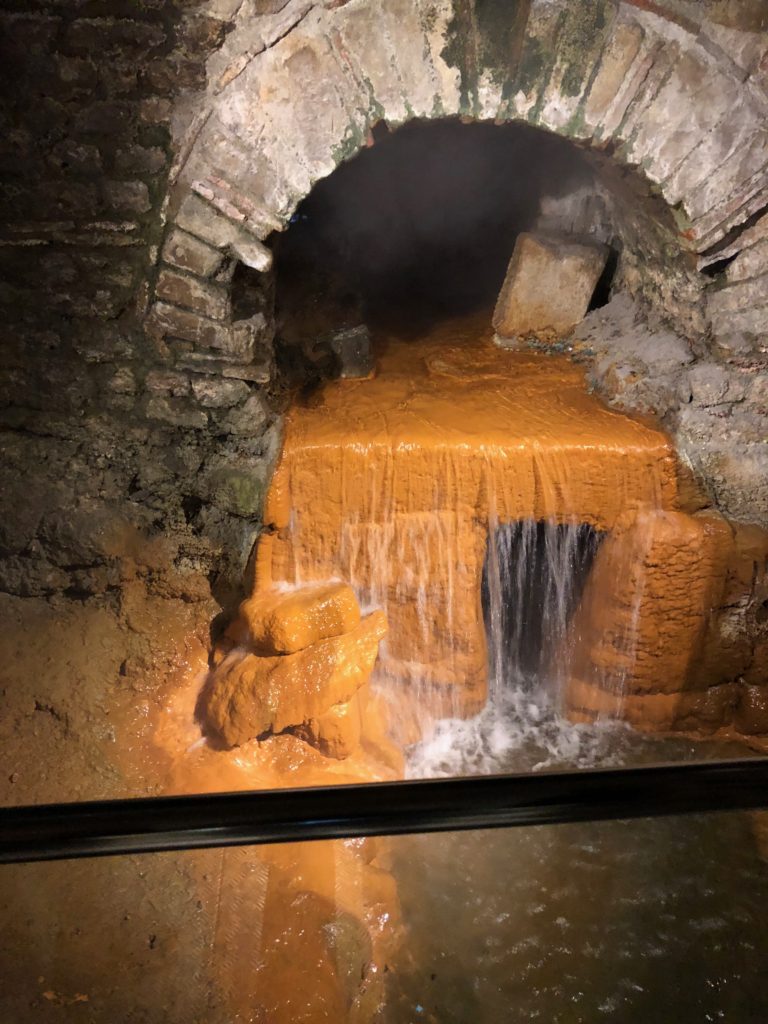
The museum also houses the original Sacred Spring. This hot spring provided naturally heated water to the bath, which the Romans believed was an act of ancient gods. A large temple on site was dedicated to the Roman goddess Sulis Minerva. Today, the spring is surrounded by 18th-century Georgian buildings. The overflow can still be seen in the museum’s artifact wing, which sends excess water to the nearby River Avon. Today, visitors can taste the spa water at the Pump Room restaurant!
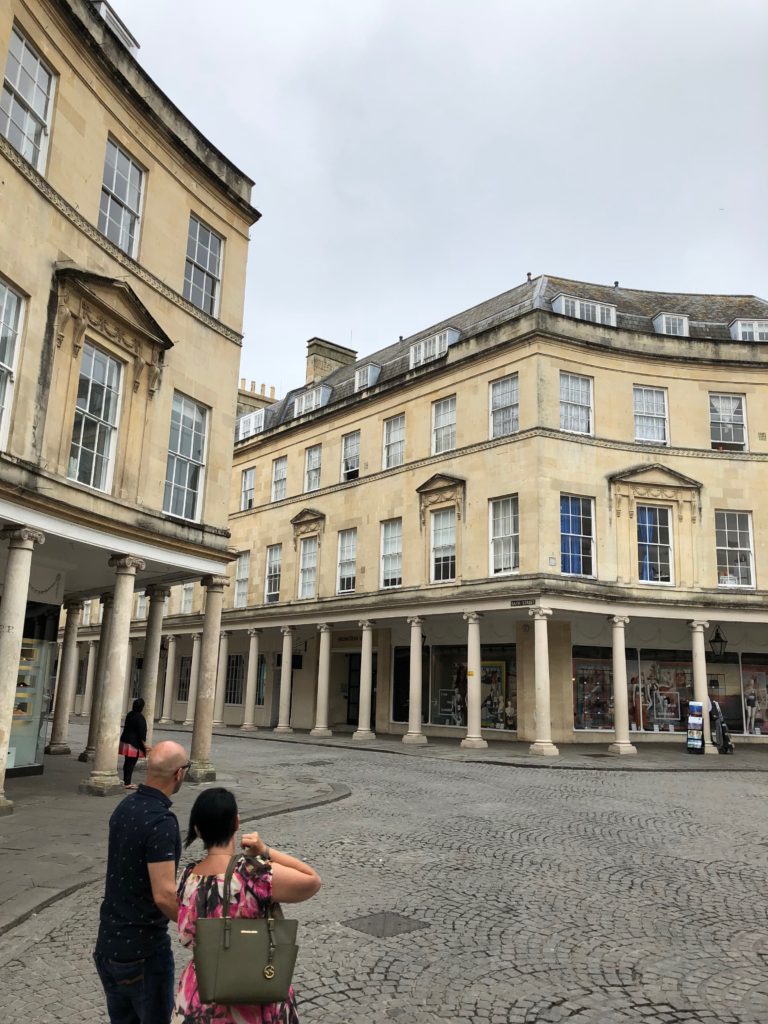
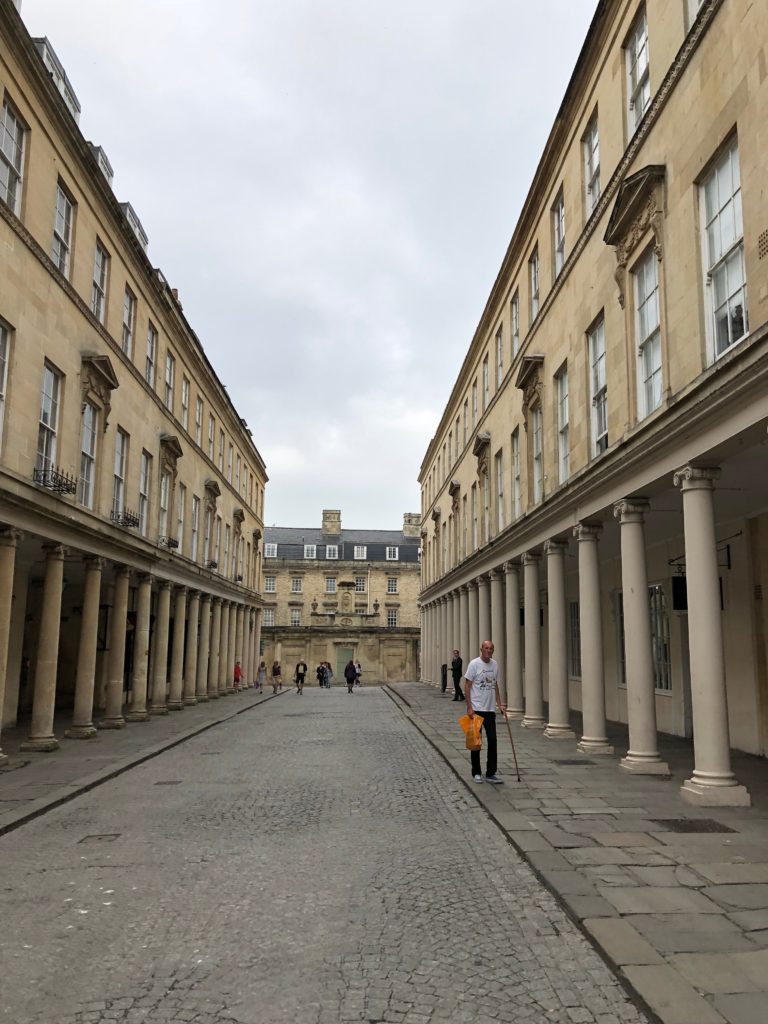
Visiting the Roman Baths was a treat! I have toured Italy and saw plenty of ancient Roman sites throughout the country. It is easy to forget that these sites extend beyond Rome and can be found all over Europe, including in England! Right outside the baths, I ventured onto the streets of the city center. Many of the buildings here are inspired by Italian architect Andrea Palladio, with distinct characteristics such as Ionic columns and long collonades.
Bath Abbey
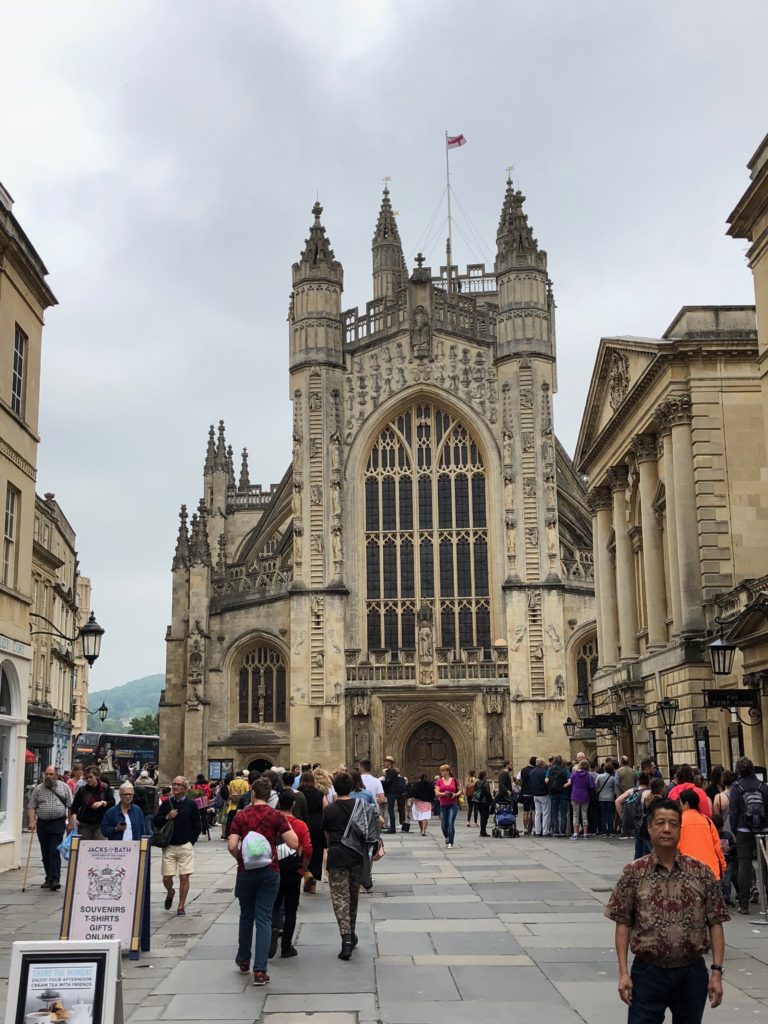
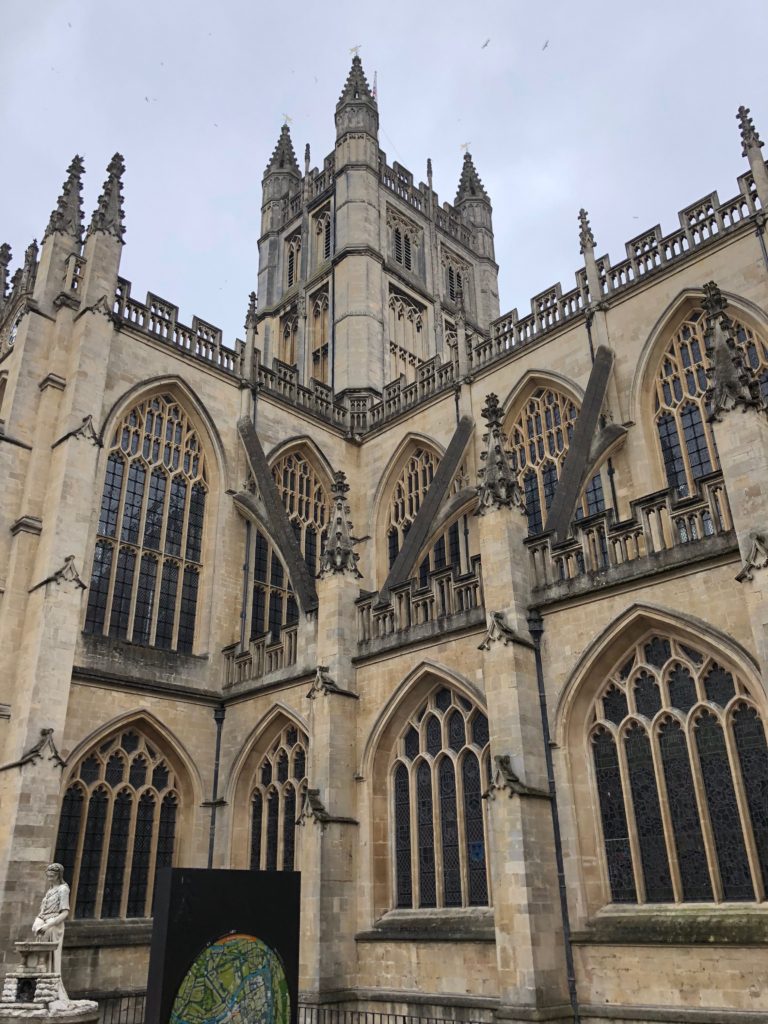
Down the street, I could see another one of the city’s prominent landmarks: Bath Abbey! The cathedral was constructed in 1616 and is a prime example of Gothic architecture. It features a traditional cross-shaped floor plan and a large front façade with vaulted, stained glass windows. Carvings that depict angels climbing a Jacob’s Ladder are located below the façade’s two prominent spires. The cathedral is also lined with flying buttresses and is topped with a tower that stands tall over the rest of the building.
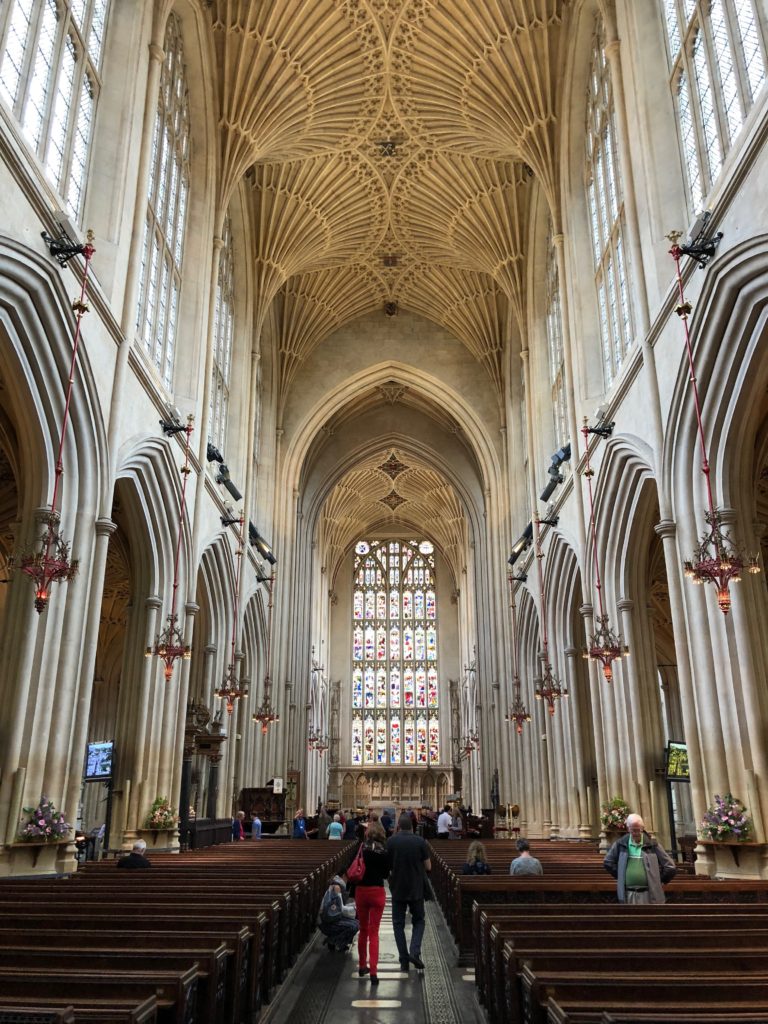
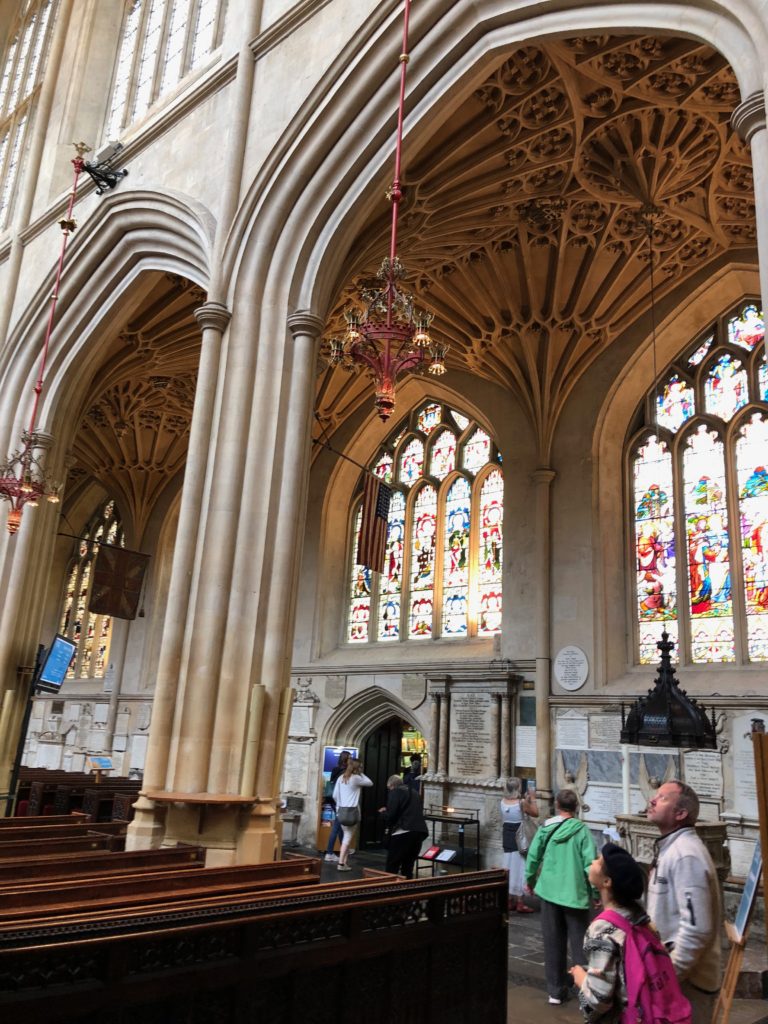
Inside, the cathedral feels like a miniature version of Westminster Abbey, with fan vaulting spanning the entire ceiling of the central nave. Ornamented columns hold up arches that separate the nave from the aisles, which are also decorated with fan vaulting! About 80% of the abbey’s walls are occupied with stained glass windows, giving the interior a bright and airy feel to it.
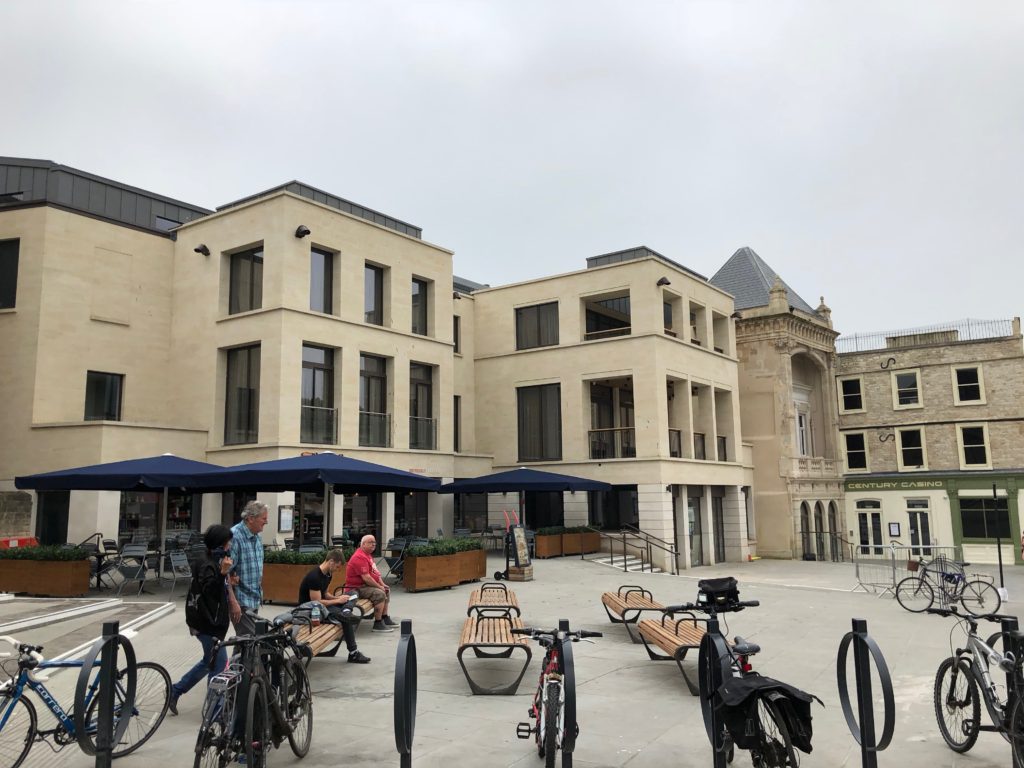
Outside of the major attractions, Bath is a city with shops, restaurants, and plenty of tourists, especially on this bank holiday. I walked through the city center, passing many classical buildings, with a few modern ones as well! I eventually came to a pub called “The Canon,” where I stopped for lunch. My cousin, who studied abroad at the University of Bath, had recommended this place, which had some amazing lunch deals!
The Circus and Royal Crescent
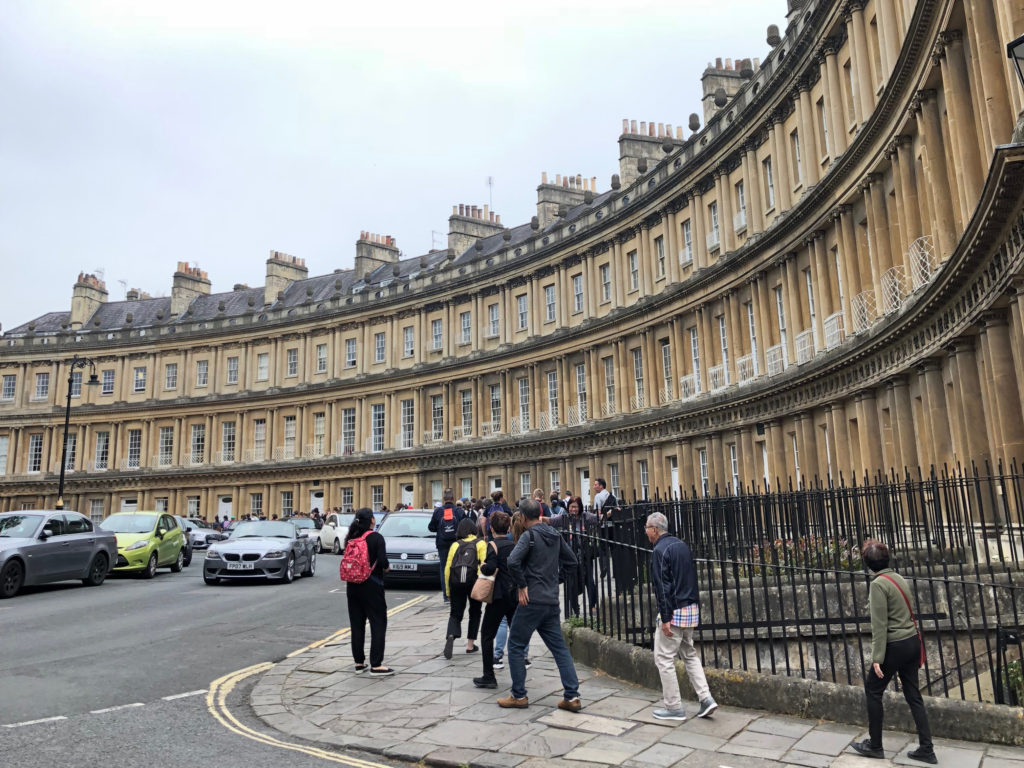
The city streets are a delight to walk through, especially for an architect who appreciates classical buildings! The professor who led the Grand Tour of Europe trip would be in heaven here! Most of the city was designed by architects John Wood the Elder and John Wood the Younger. There were two areas in the city that I was particularly excited to check out! The first of these was the Circus: a large roundabout lined with Georgian townhouses. The buildings take on the form of an inverted coliseum!
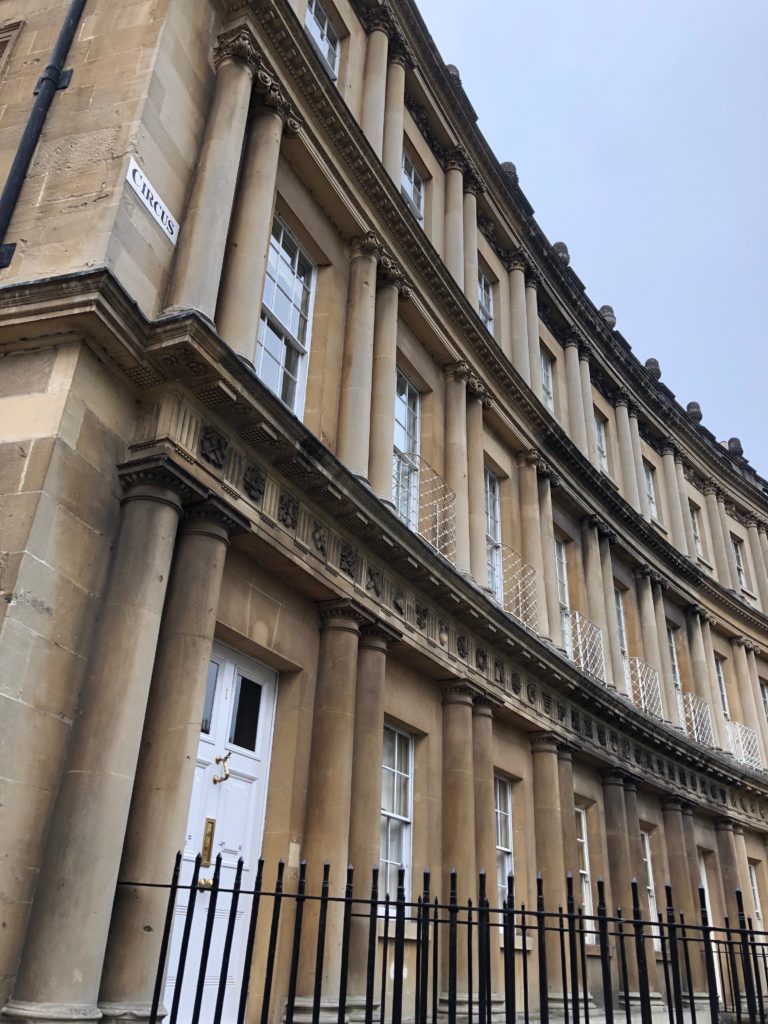
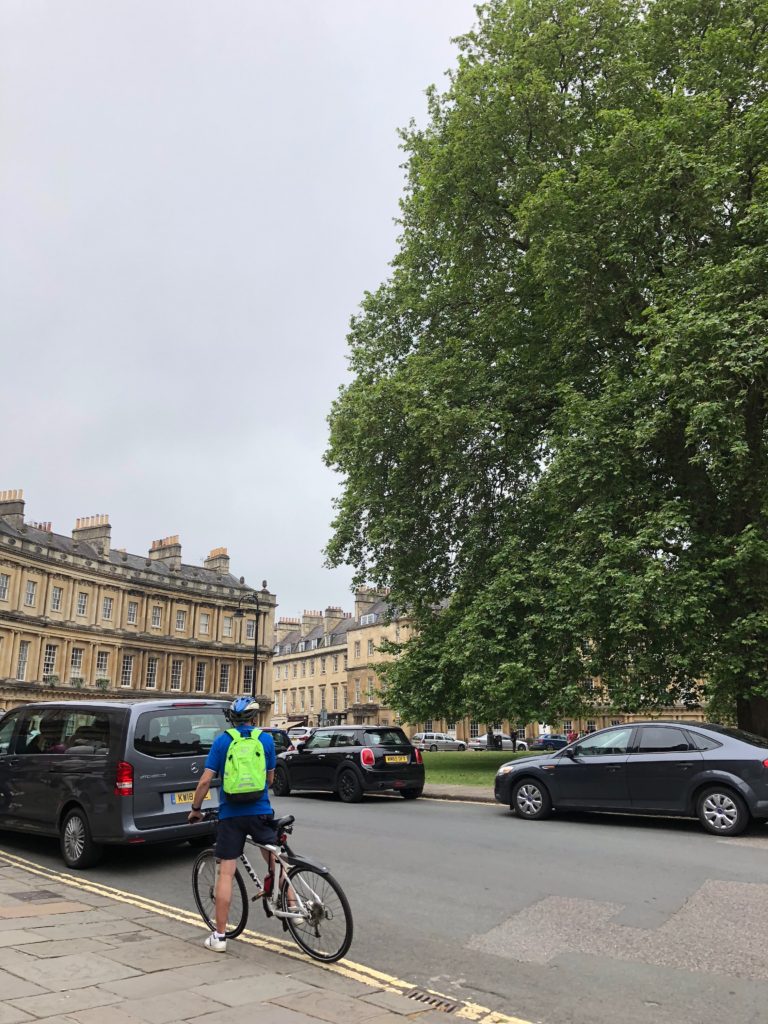
Doric, Ionic, and Corinthian columns line the main façades. The stacking of the orders is a common practice throughout
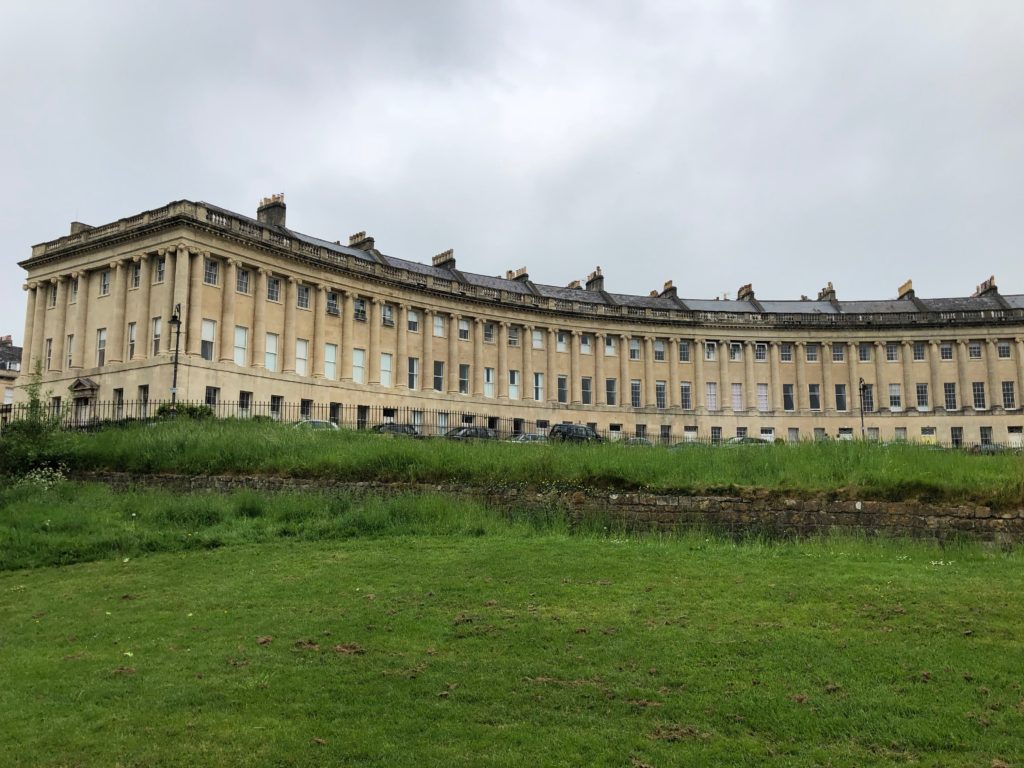
I continued up the hill towards another area of the city: The Royal Crescent. This block of townhouses is one of the most prestigious in Bath. It is also built in the Georgian style and has a curved façade decorated with tall Ionic columns spanning two stories.
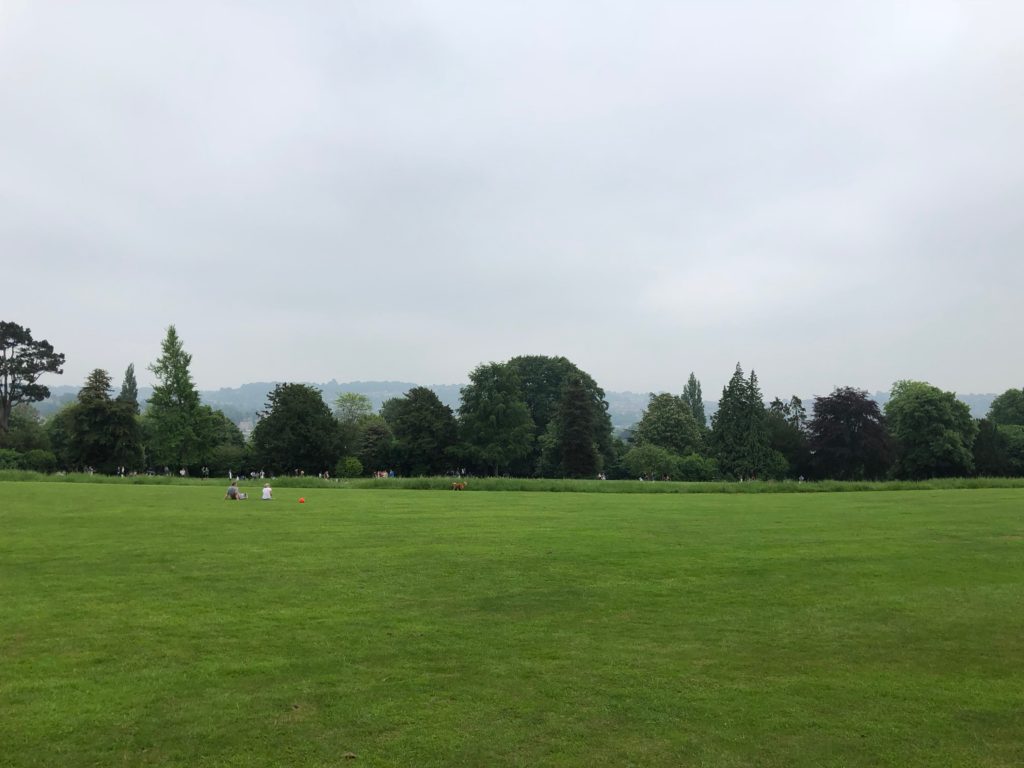
The crescent overlooks a large green space, called “Royal Victoria Park,” with uninterrupted views of the surrounding English countryside. The park is a popular spot for locals and tourists to relax and take in the scenery.
Pulteney Bridge
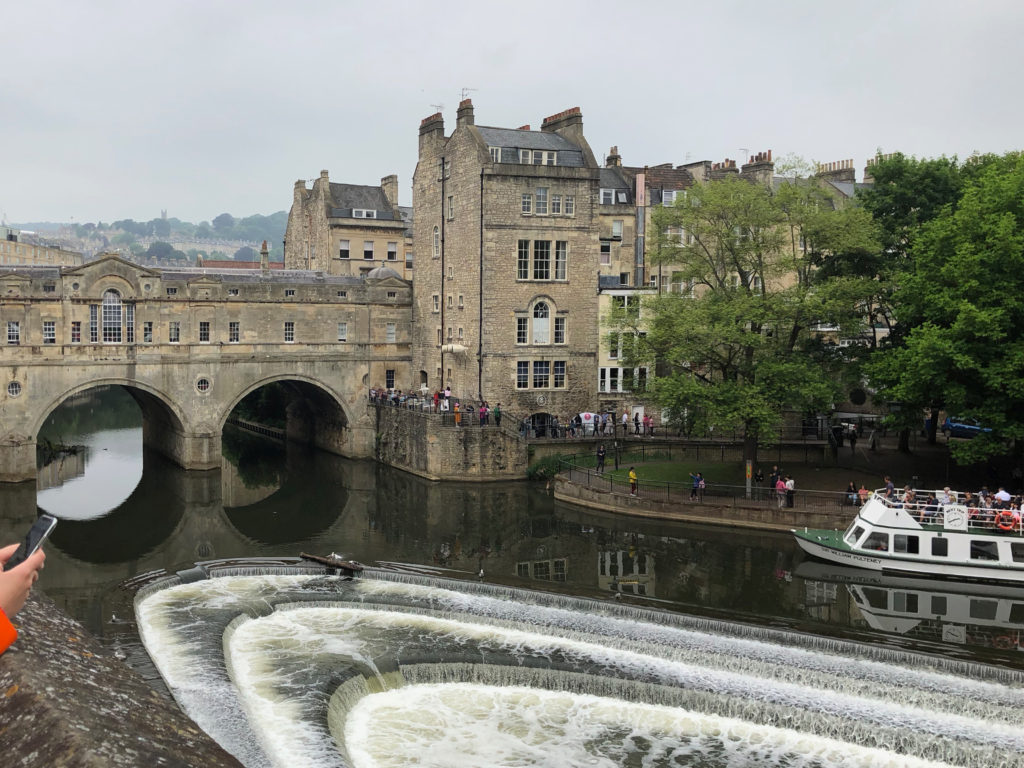
After enjoying the architectural delights, I headed downhill and back into town. I stopped by the Pulteney Bridge: one of the most picturesque spots on the River Avon. This Palladian-style bridge is located over a large weir, which was built to prevent the city from flooding.
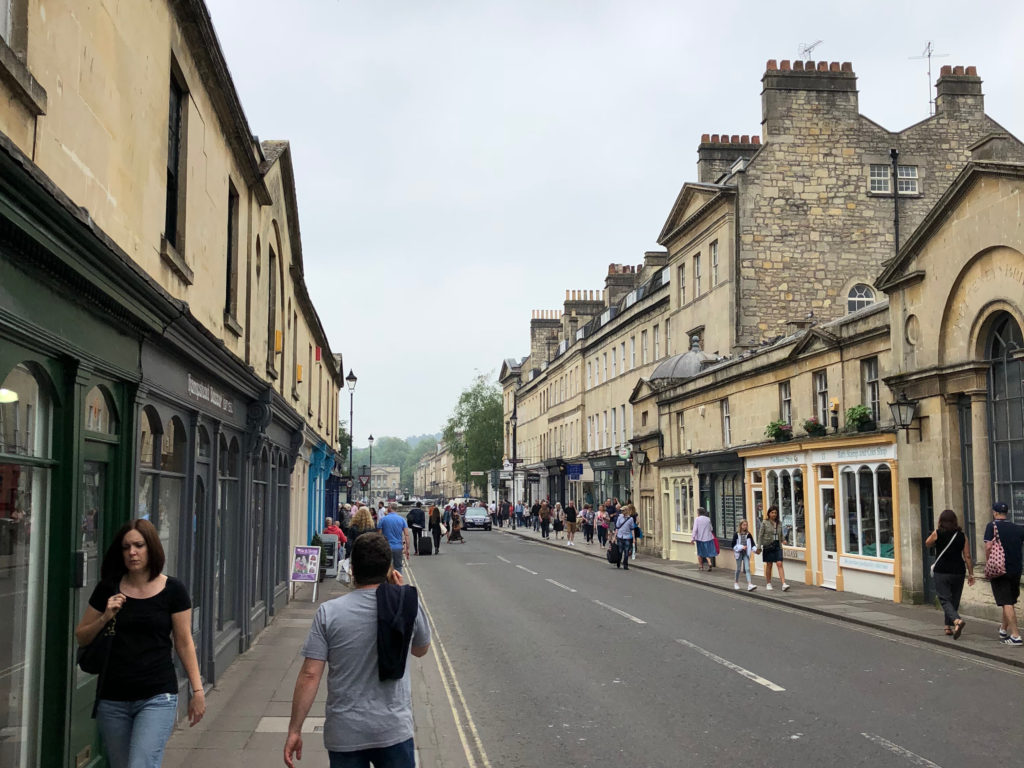
When traversing the bridge, one easily forgets that they are above the water. Shops line both sides of the street, much like the Ponte Vecchio in Florence. These stores are built above three large arches that span the river.
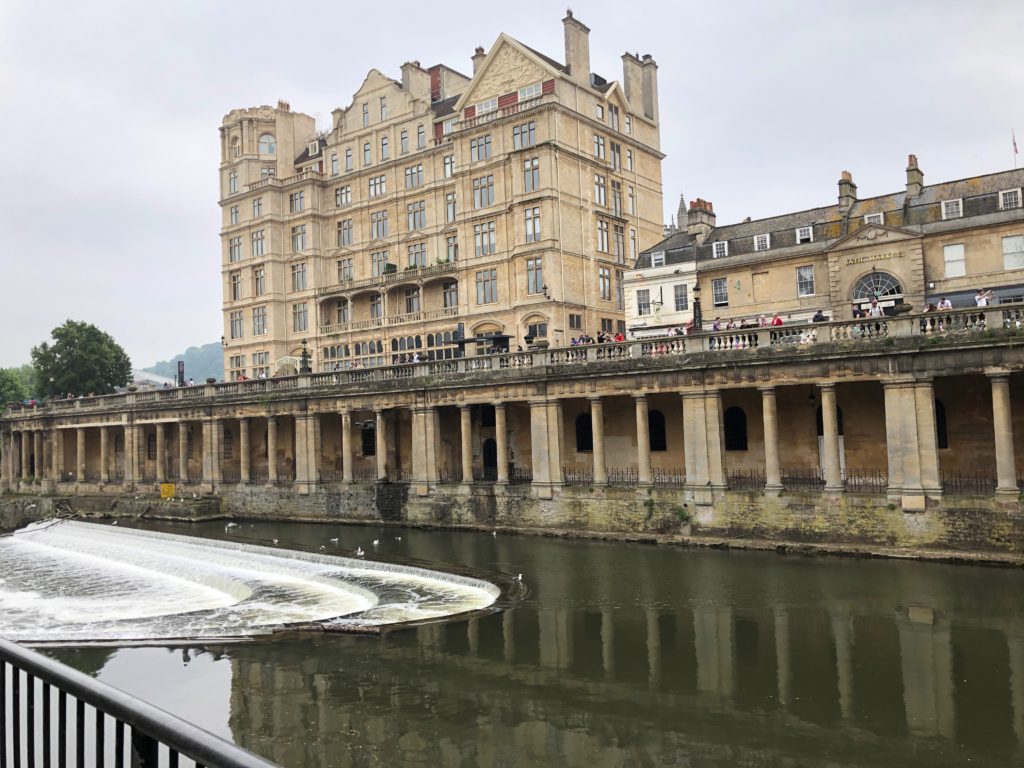
Once across, I went down to the riverside, where I got an amazing view of the Empire Hotel. From here, I could see the Grand Parade, which sits over a large colonnade of Doric columns next to the Pulteney Weir.
Bathwick
I spent the afternoon exploring Bathwick in search of a view of the city that I had previously seen in pictures. I began ascending Bathwick Hill: a street leading from the center of the neighborhood up to the university. On the way over, I passed several more rowhouses, which sloped upwards along the steep hill.
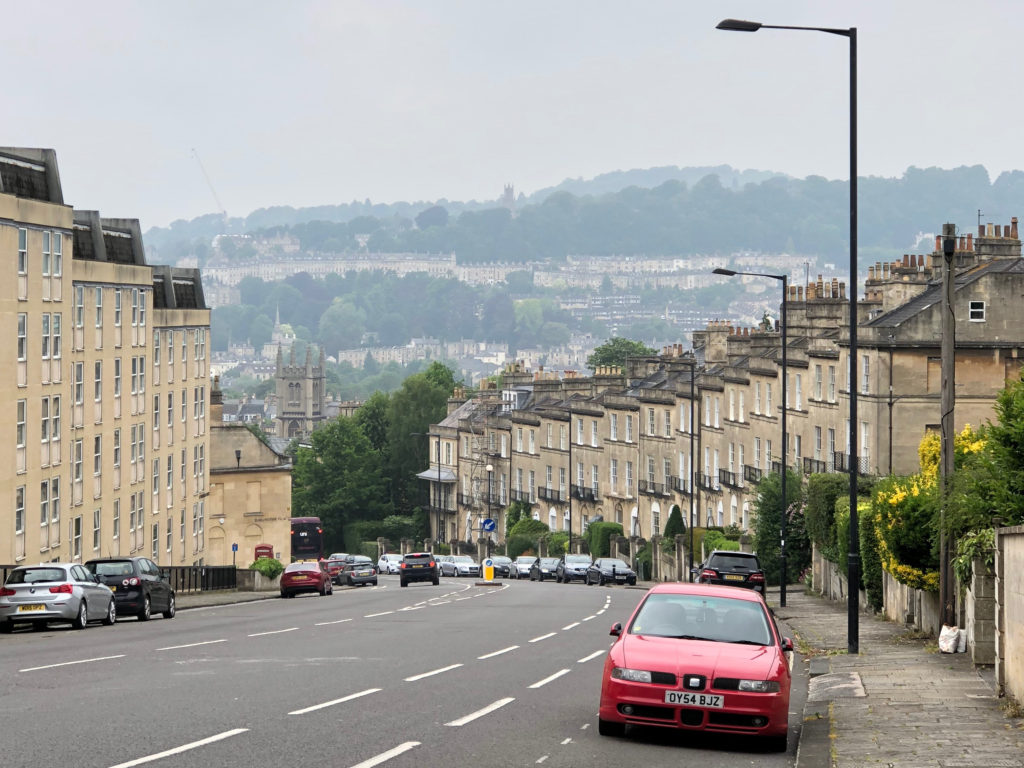
I turned around and got that iconic view of Bath, which was covered in fog but still appeared to span over the surrounding hills.
Sham Castle
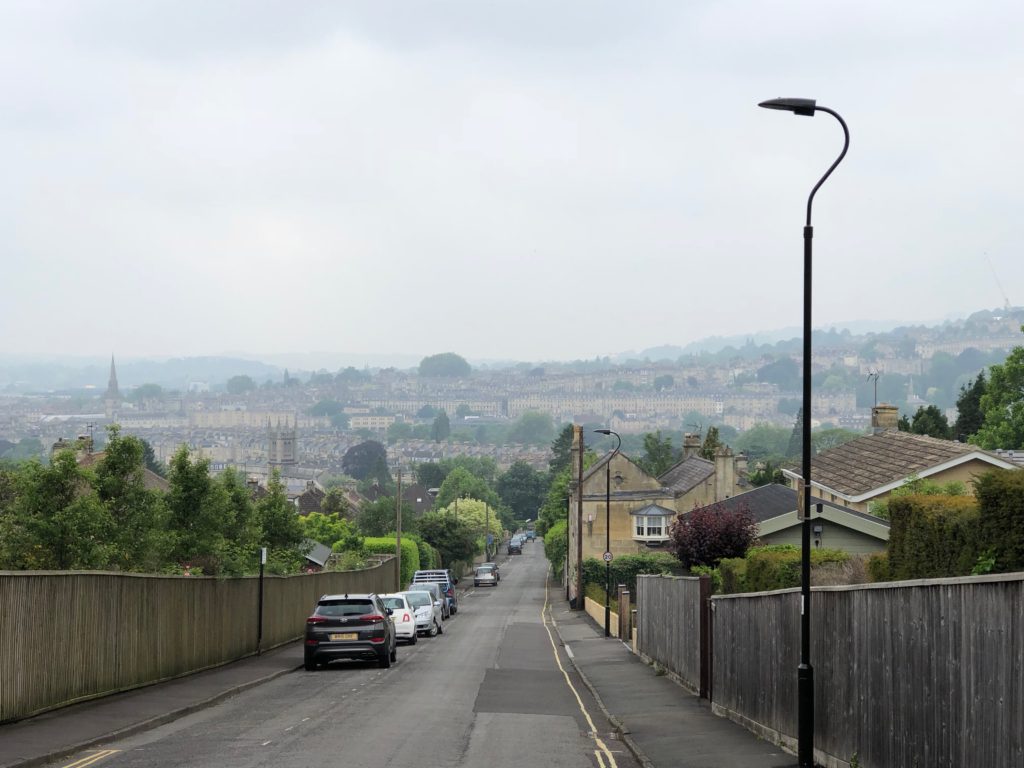
Britain is known for its castles, and while I wasn’t going to have enough time to see any of the major ones outside of London, my cousin recommended that I visit Sham Castle in Bath. I ventured down a side street towards a small path, taking in more panoramic views of the city on the way over.
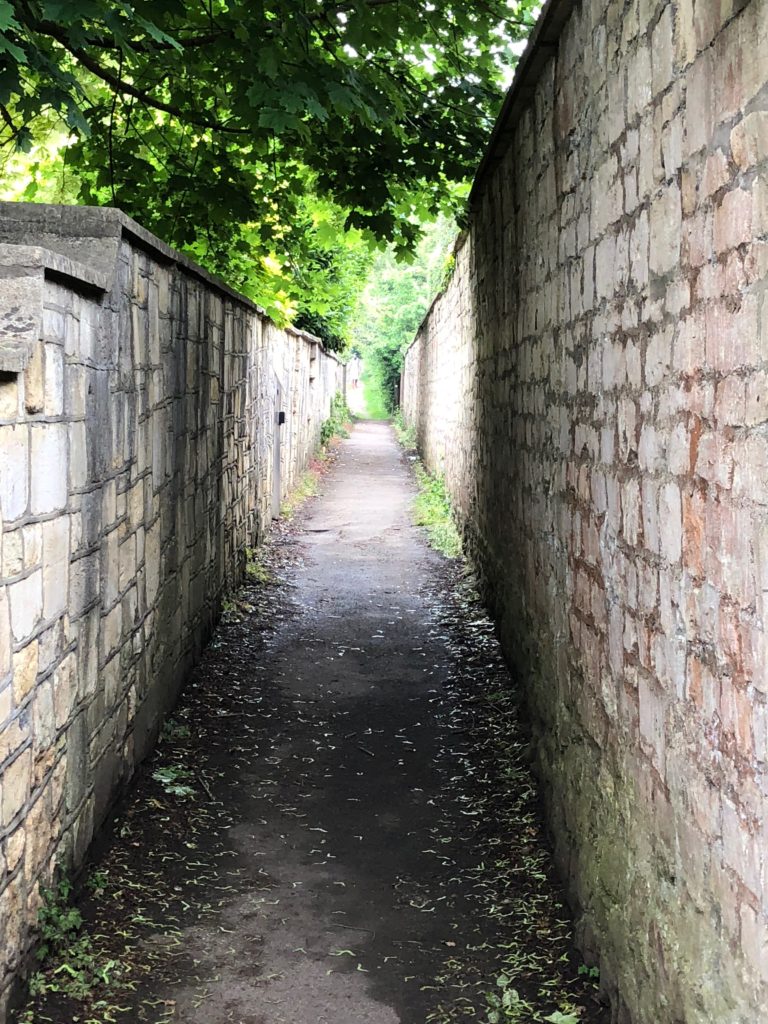
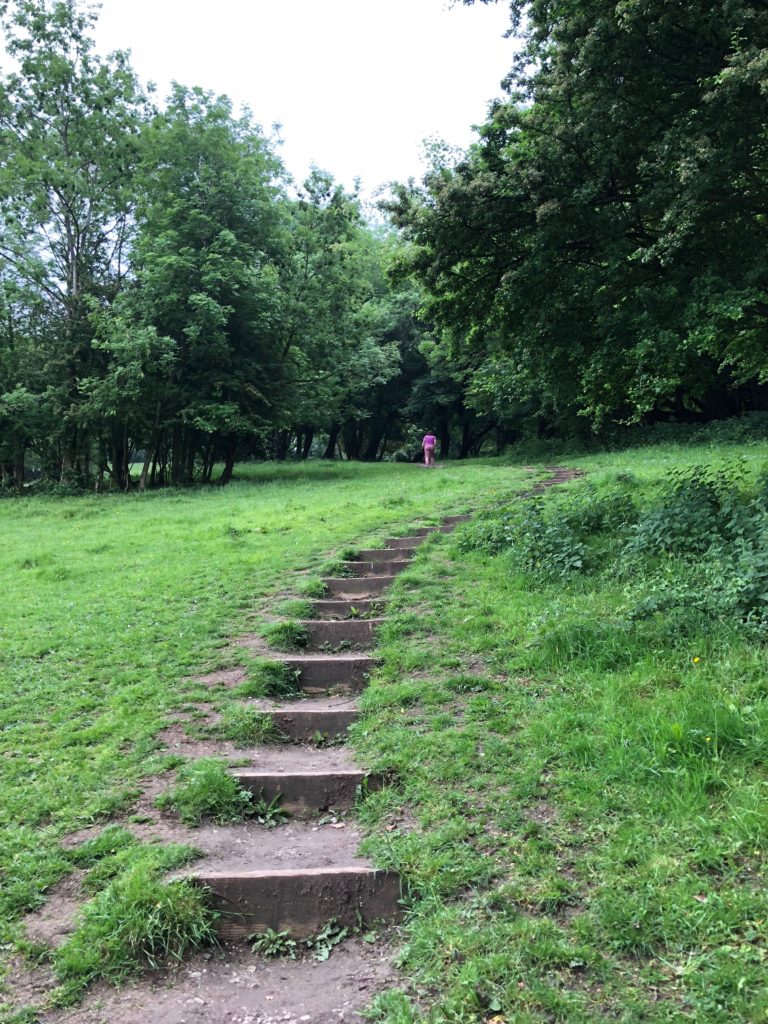
I began my hike up towards the castle, passing through narrow alleys and onto stone stairs. The scenery went from suburban to natural. Although it was cloudy, it was still fairly hot outside, so I definitely broke a sweat as I hiked up the stairs. I periodically looked back at the city, which appeared small from the side of the hill. I continued upwards until I eventually reached the castle.
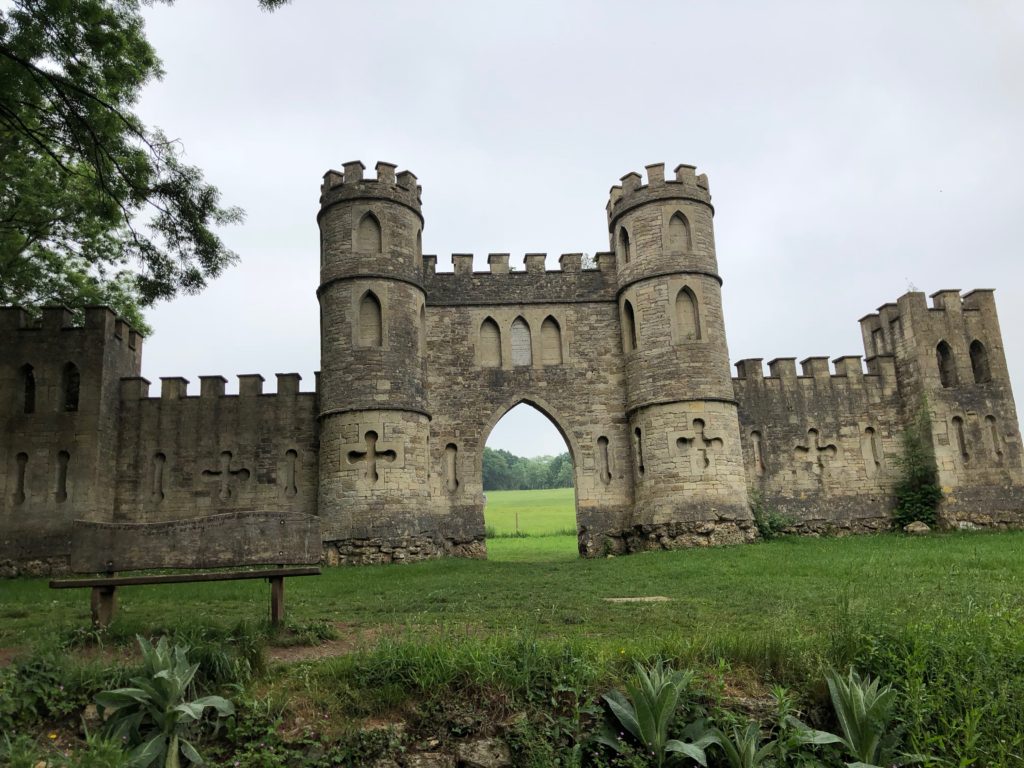
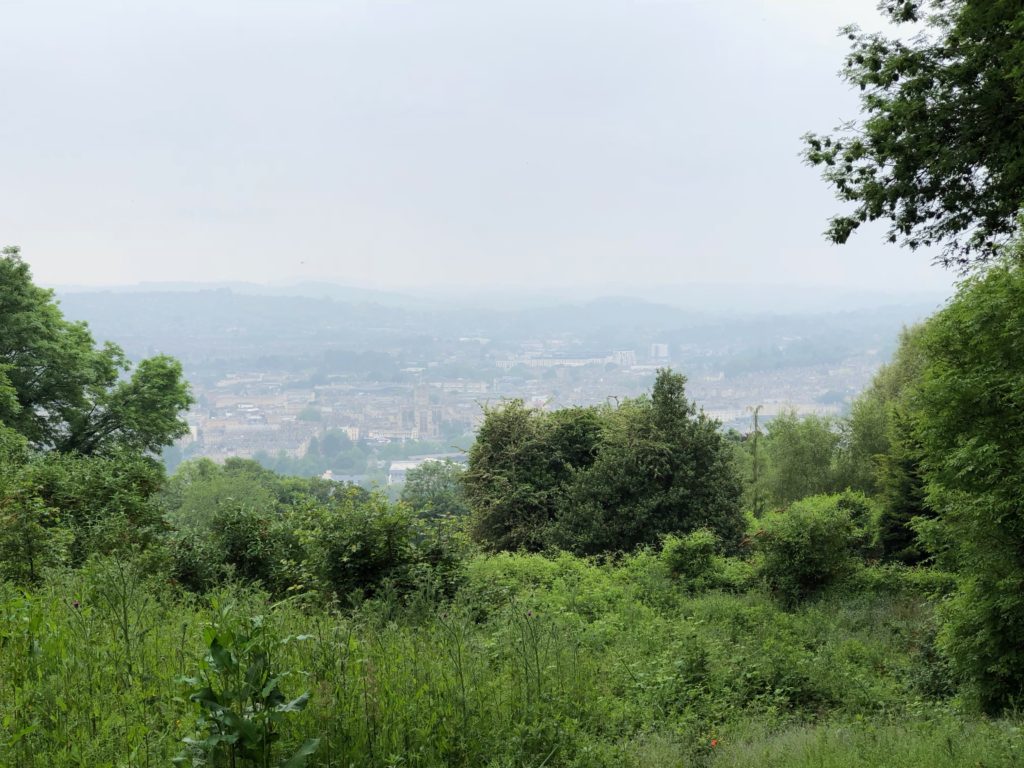
To my surprise, the castle was just a wall with an arch and two turrets! I was expecting it to be a building you could actually enter. Nonetheless, the view from the castle was breathtaking, so it was well worth the hike to get there. Instead of walking all the way down the hill, I opted to take a bus back into the center of Bathwick.
Bath’s Canals
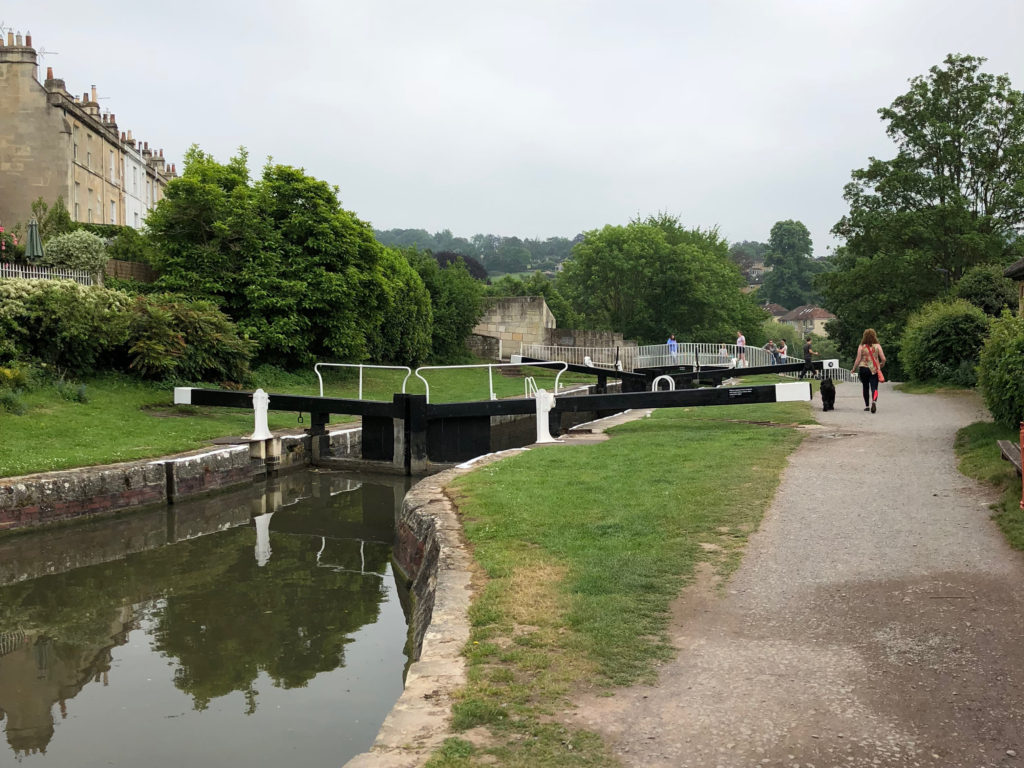
I took an early evening walk along Bath’s canals, which parallel the River Avon on the outskirts of the city. These canals provide a navigable route for boats traveling along the river. They also provide a scenic walk for pedestrians.
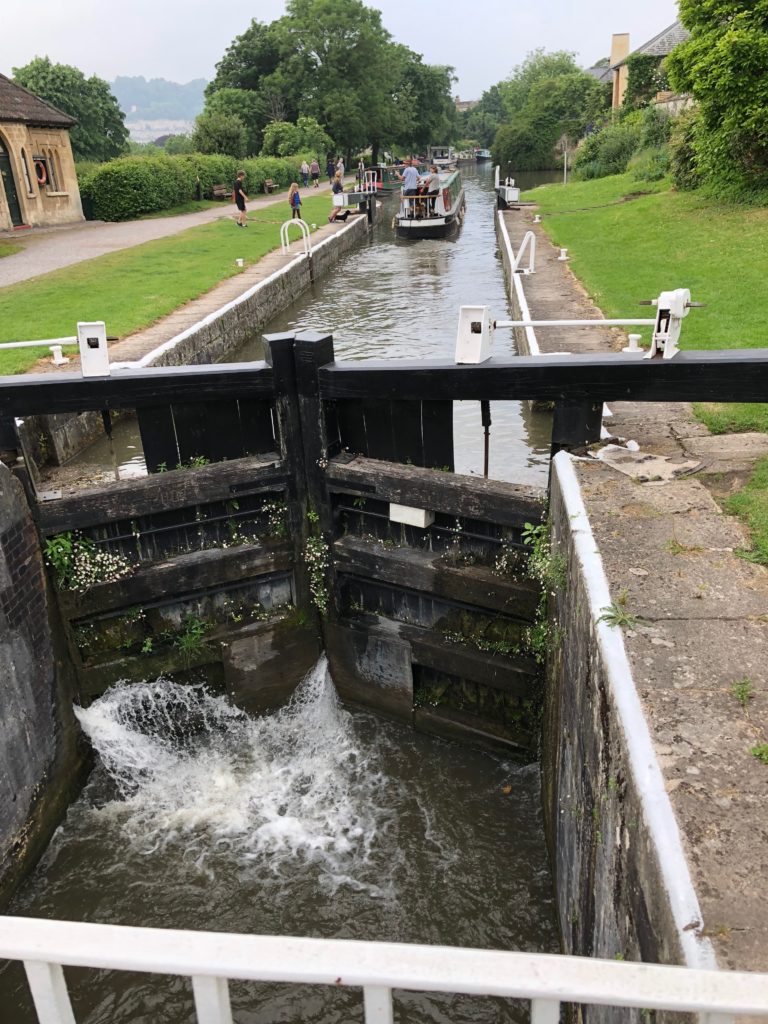
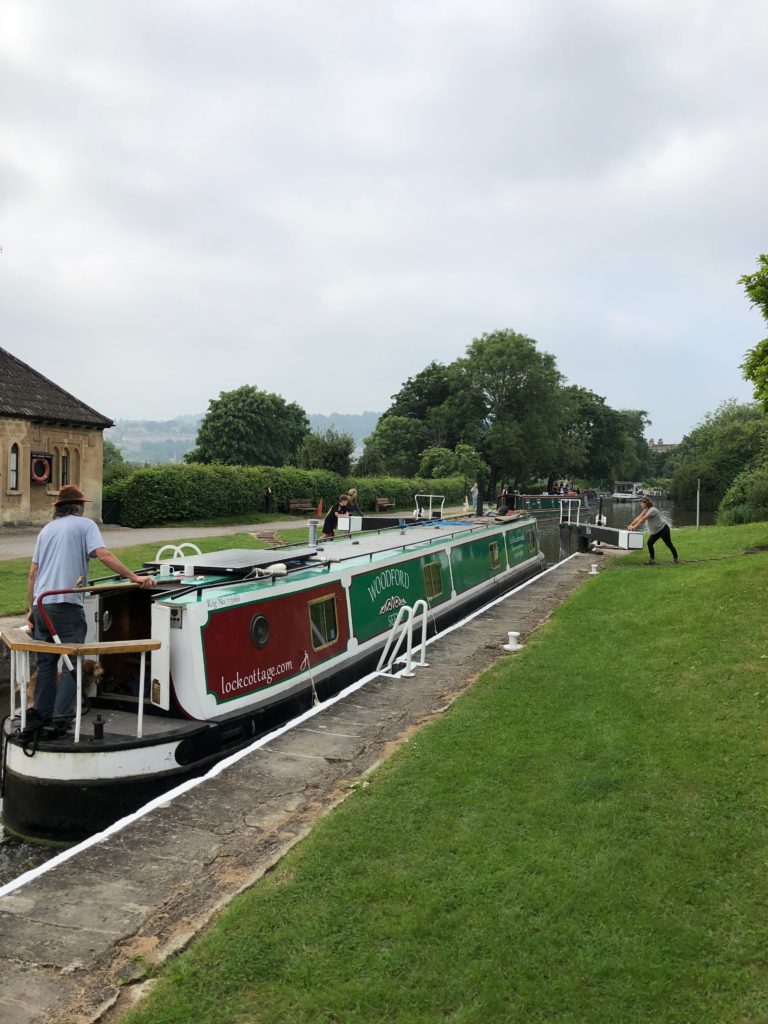
The canal has several locks, which are manually operated to allow the boats to traverse the terrain changes. Visitors are welcome to help out, which is exactly what I did! I used my full-body strength to push the lock open, allowing a canal boat to enter. The owner got out to turn a valve and water began flowing into the lock. After the boat was raised to the proper elevation, I helped re-open the lock to allow the man to continue his journey down the canal.
Although I only had a day in Bath, I felt like I saw more sights than I could have ever imagined for just one day. The city is beautiful and would have been an amazing place to learn about classical architecture.
I spent the evening at my hostel’s pub with one of my roommates! He actually went to school in Massachusetts, where I am from! We had a few pints and took a walk around the city. While the hostel here was not as lively as my hostel in London, it still had a fun bar and friendly staff. I decided to end my night early, as I had a long sightseeing tour planned for the following day!

[…] rest of the buildings of the complex are built in the Georgian style. Similar to those in the English city of Bath, the castle’s courtyards feature buildings with large, linear windows and simple ornamentation. […]